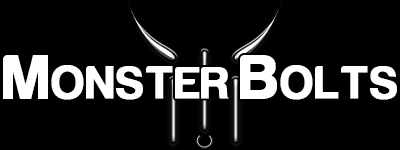Torque is only a means to an end—the end is preload (clamp load). Because most torque is lost to friction under the head and in the threads, washers, lubrication, and surface finish can swing clamp load by 30–50% for the same torque. This guide gives you the practical tools to tighten reliably.

Torque vs. Preload — The Simple Formula
You’ll often see the relationship written as:
T ≈ K · F · D
- T = tightening torque (lbf·in or N·m)
- F = desired preload / clamp load (lbf or N)
- D = nominal bolt diameter (in or m)
- K = “nut factor” (effective friction) determined by threads + underhead + lubrication + surface finish + washer
Key idea: If K changes, preload changes linearly at the same torque. Lower K (smoother + lubricated) → more preload; higher K (rough + dry) → less preload.
Where Your Torque Really Goes
- ~50% underhead friction (bolt head or nut bearing surface)
- ~40% thread friction
- ~10% actually stretches the bolt (preload)
Controlling friction (with the right washer, surface and lube) is how you control preload.
Quick Reference: Typical K-Factors
| Condition | Examples | Typical K (nut factor) | Notes |
|---|---|---|---|
| Dry, as-received steel | Plain carbon steel, dry black oxide | 0.20–0.25 | High scatter; do not mix with lubricated specs. |
| Zinc plated, light oil | CR+3 zinc with light rust-preventive oil | 0.18–0.22 | Smoother than plain; still variable by supplier. |
| Black oxide + oil | Thermal black oxide with light oil film | 0.15–0.18 | Lower K than dry; good consistency if kept clean. |
| Stainless, lubricated | A2/A4 with anti-seize or oil | 0.14–0.18 | Lubrication reduces galling risk and K scatter. |
| PTFE/wax coated | PTFE patch, waxed washers, coated nuts | 0.10–0.14 | Very low K; torque must be reduced accordingly. |
Guidance values only—always follow the engineering spec for your assembly.
Washers & Bearing Surfaces: Why They Matter
- Flat washers spread load and smooth the bearing surface → more consistent K and better preload repeatability.
- Hardened structural washers (e.g., F436) resist brinelling/embedding under high load → preload retention.
- Surface prep: remove paint/scale under the rotating element or use a washer; rough, painted surfaces raise K and reduce preload.
See our Washer Types & Standards Guide for choosing SAE/USS/ISO/F436 options.
Worked Example (Imperial): Same Torque, Different Preload
Goal: Compare preload at the same torque when K changes.
- Bolt: 3/8-16 (nominal D = 0.375 in), Grade 8
- Proof stress ≈ 120 ksi; tensile stress area ≈ 0.0775 in² → proof load ≈ 9,300 lbf
- Target preload F ≈ 75% of proof ≈ 6,975 lbf (typical for non-gasketed joints)
Torque for different K values (using T = K·F·D):
| Condition (K) | Torque (lbf·in) | Torque (lbf·ft) | Comment |
|---|---|---|---|
| Dry steel (~0.20) | ≈ 523 | ≈ 43.6 | Baseline |
| Black oxide + oil (~0.15) | ≈ 392 | ≈ 32.7 | ~25% less torque for same preload |
| PTFE/wax (~0.12) | ≈ 314 | ≈ 26.2 | ~40% less torque for same preload |
Illustrative only. Always use your engineering spec or validated test data for production.
Practical Install Tips (Do This)
- Define the condition (dry, oiled, anti-seize, coated) and keep it consistent across all fasteners.
- Use a washer under the rotating element (nut or bolt head) to stabilize K and protect surfaces.
- Match materials (e.g., A4 stainless with A4 nuts/washers) and use anti-seize on stainless to prevent galling.
- Calibrate torque tools regularly; use smooth, steady pull—avoid “bouncing” impact guns for final snug.
- Mark & recheck critical joints after first thermal/vibration cycles; preload can relax with embedment.
Bolt Preload FAQs
Is more torque always more preload?
No. If friction (K) rises—say, dry threads or rough paint—you can add torque and get little preload gain. Control K first.
Do I always need a washer?
Not always, but washers usually improve consistency by smoothing the bearing surface and preventing embedment.
How much preload should I target?
Common practice for non-gasketed joints is 70–75% of proof load. Follow the drawing/spec for your assembly.
Why does stainless seize when tightening?
Adhesive wear (galling). Use anti-seize or oil, slow/steady tightening, and matched A2/A4 nuts/washers.
What standard covers torque-tension testing?
ISO 16047 is commonly used for torque/tension characterization; VDI 2230 is a classic design reference.
